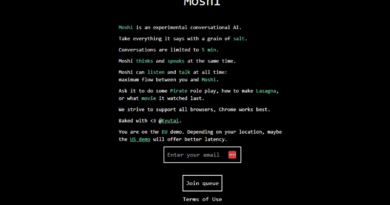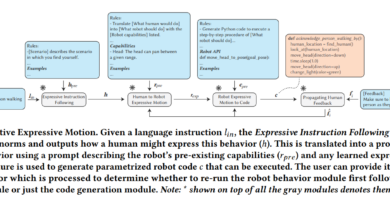Meet Yi: The Next Generation of Open-Source and Bilingual Large Language Models
In the rapidly evolving field of artificial intelligence and language processing, large language models (LLMs) have emerged as powerful tools for various applications. These models are designed to understand and generate human-like text, enabling users to perform tasks such as communication, learning, research, and entertainment. However, one of the significant challenges in this domain is developing LLMs with bilingual or multilingual capabilities.
Multilingual capabilities are crucial in our increasingly globalized world, where effective communication in multiple languages is essential. Existing LLMs often fall short of providing accurate and contextually relevant responses in bilingual or multilingual contexts. This limitation has prompted the development of a next-generation open-source large language model called “Yi.”
Understanding the Need for Bilingual Large Language Models
The demand for bilingual LLMs stems from the need to bridge communication gaps and enhance global understanding. With the rise of digital assistants and language processing applications, users expect seamless and precise communication in multiple languages. Traditional LLMs often struggle to deliver accurate responses in bilingual or multilingual contexts due to their limited language capabilities.
🔥Explore 3500+ AI Tools and 2000+ GPTs at AI Toolhouse
Bilingual LLMs like Yi aim to address these challenges by offering advanced language understanding, commonsense reasoning, and reading comprehension skills in multiple languages. These models are trained on extensive multilingual corpora, enabling them to comprehend and respond accurately in two major languages. By providing a versatile tool for a diverse user base, bilingual LLMs like Yi are poised to revolutionize the field of language technology.
The Power of Yi: A Next-Generation Bilingual Large Language Model
Yi represents a significant advancement in artificial intelligence and language processing. Developed as an open-source model, Yi leverages the collective intelligence of the global developer and user community for continuous enhancement and adaptation. This open-source nature ensures that the model remains relevant and up-to-date with the latest demands and technological advancements.
The effectiveness of Yi becomes evident when evaluating its performance in language capability benchmarks. It outperforms many existing large language models in English and other major languages, showcasing its proficiency in understanding, reasoning, and language generation. Standardized tests validate its capacity to handle complex language tasks with precision, making it an invaluable resource for personal and professional applications.
Unlocking Possibilities with Bilingual Large Language Models
The applications of bilingual large language models like Yi are vast and varied. From personal learning and entertainment to professional tasks, these models offer a versatile and efficient solution for various needs. Let’s explore some potential use cases:
Multilingual Customer Support
Companies operating in global markets often encounter the challenge of providing customer support in multiple languages. Bilingual LLMs like Yi can serve as virtual assistants, understanding and responding accurately in different languages. This capability streamlines customer support processes, enhances customer satisfaction, and reduces the need for human intervention.
Language Learning and Translation
Bilingual LLMs can also serve as powerful language learning and translation tools. By interacting with Yi, users can practice their language skills, receive contextual feedback, and explore various linguistic nuances. Additionally, these models can aid in real-time translation, making communication across language barriers more efficient and effective.
Cross-Cultural Research and Communication
Researchers and professionals engaged in cross-cultural studies and collaborations can benefit greatly from bilingual LLMs. Yi’s ability to understand and generate text in multiple languages facilitates effective communication, eliminates language barriers, and promotes global understanding. This capability opens up new avenues for cross-cultural research and collaboration, leading to valuable insights and advancements in various fields.
Embracing the Open-Source Advantage
The open-source nature of bilingual LLMs like Yi offers several advantages. First and foremost, it encourages collaborative development and improvement. Developers and users worldwide can contribute to enhancing the model’s performance, expanding its language capabilities, and addressing specific language-related challenges. This collective effort ensures that the model remains relevant, adaptable, and aligned with the evolving needs of the user community.
Furthermore, the open-source aspect fosters transparency and trust. Users can access the model’s code and understand its inner workings, mitigating concerns about biased or unethical language generation. This transparency promotes accountability and empowers the user community to actively participate in refining the model’s behavior.
Conclusion
The development of bilingual large language models like Yi represents a significant breakthrough in artificial intelligence and language processing. These models, with their advanced language understanding and generation capabilities, address the challenges of bilingual and multilingual communication in our interconnected world. With the power to understand and respond accurately in multiple languages, bilingual LLMs unlock new possibilities for personal, professional, and cross-cultural applications.
The open-source nature of these models ensures their continuous evolution, adaptation, and alignment with the latest technological advancements. As developers and users collaborate to enhance and refine these models, the potential for language technology to bridge communication gaps and foster global understanding grows exponentially. By embracing the possibilities offered by bilingual large language models like Yi, we pave the way for a future where language is no longer a barrier but a conduit for connection and collaboration.
Don’t forget to follow us on LinkedIn. Do join our active AI community on Discord.
If you like our work, you will love our Newsletter 📰





What’s up, the whole thing is going well here and ofcourse every one is sharing data,
that’s genuinely fine, keep up writing.!
I really love your site.. Excellent colors & theme. Did you build this web site yourself? Please reply back as I’m hoping to create my own personal website and would love to find out where you got this from or exactly what the theme is named. Thanks.